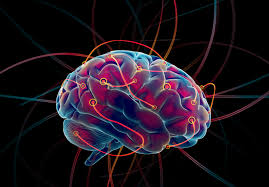The Beauty of Neuroplasticity After a Stroke
- Patricia Faust

- Jan 27, 2019
- 3 min read
Around twenty years ago very talented neuro-researchers discovered that the brain has the ability to change itself. This brain principle is neuroplasticity and it completely changed the way that we look at the brain. Neuroplasticity is the ability of the brain to develop new neural pathways in the brain. Combined with neurogenesis, the ability of the brain to grow new brain cells, the brain is very capable of adapting and recovering from the trauma of stroke.
The National Institutes of Health recently published the results of a study on brain recovery post stroke. The brain it seems, is very busy right after the onslaught of a stroke.
The onset of a stroke results when the blood flow to the brain is disrupted. Without the constant feed of oxygen-rich blood, brain cells start to die. Recovery is dependent on a process known as axonal sprouting. This simply means that the brain doesn’t waste any time having healthy cells send out new projections. These new spouts (projections) generate new connections between brain cells or reestablish some of the new connections lost or damaged by the stroke. This is neuroplasticity at its finest and can result in partial recovery.
Let’s talk about the brain cell so that you understand this whole process. The neuron (brain cell) is made up of a cell body (soma), a long arm extending out of the cell body (axon) and branchlike fingers (dendrites). The dendrites reach out into the brain environment seeking new information to relay back to the cell body. Information from the cell body travels down the axon into the surrounding brain, while information from the environment is gathered by the dendrites and brought back to the cell body. Our brains contain millions of brain cells and each neuron can communicate with another ten thousand neurons. The axon is crucial to this information loop in the brain. So axonal sprouting after a stroke is a critical development.
How does axonal sprouting actually happen? There have been studies that have identified a protein – growth and differentiation factor 10 (GDF10) that was involved in the early stages of sprout development. Through animal studies researchers discovered that GDF10 was released very early after a stroke. The study determined that GDF10 stimulated axonal growth and increased the length of the axons. One study compared mouse models of stroke with GDF10 released over a 2 -3- week period to an untreated group. The results indicated that the mice treated with GDF10 performed various motor tasks significantly faster and with fewer errors after a stroke than mice that received no treatment.
There was another study where researchers compared neuronal growth with GDF10 after a stroke to axonal sprouting that occurs in normal development. The result of this study determined that GDF10 affected a group of genes after a stroke that was distinct from those in development. Regeneration is a unique program in the brain that occurs after injury.
What are the benefits of this research? One outcome was that this research helped clarify the mechanism of repair following stroke. Another outcome identified GDF10 – a key protein – advancing knowledge of how the brain heals itself from the devastating effects of stroke. It may also prove helpful in the the development of new therapeutic strategies to promote recovery. Never underestimate the power of the brain.
Reference:
Molecule proves key to brain repair after stroke. (November 9, 2015), National Institutes of Health. Retrieved November 12, 2015 from http://www.nih.gov/nih-research-matters/molecule-proves-key-brain-repair-after-stroke






Comments